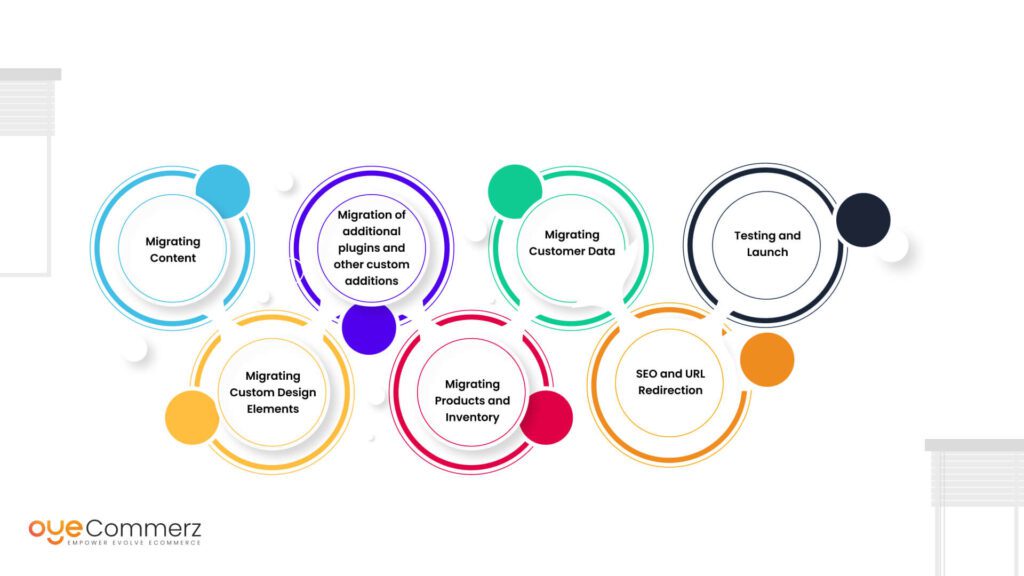Seamless WP to Shopify Migration: Your Ultimate Guide to E-commerce Success
Seamless WP to Shopify Migration: Your Ultimate Guide to E-commerce Success
Blog Article
Shifting from WordPress to Shopify marks an exciting step in streamlining your e-commerce processes. As businesses expand, choosing a solution that aligns with scalability, UX, and customization is essential. Shopify has emerged as a preferred choice for online merchants, providing unmatched flexibility, data protection, and ease of use. In this guide, we will delve into the transformative impact of this migration, discuss the advantages, and provide practical tips to ensure a smooth transition.
1. Why Switch from WordPress to Shopify?
The combination of WordPress and WooCommerce, continues to support countless online stores. However, as businesses scale, issues like reliance on plugins, security vulnerabilities, and complex setups can hinder progress. Shopify, designed explicitly for e-commerce, addresses these concerns with an comprehensive, user-friendly solution. Real data back this shift—Shopify powers over 4.4 million websites worldwide, with a reported 10% boost to sales conversion rates for numerous merchants after migration.
2. Shopify's Advantages for Thriving Online Stores
Shopify’s robust ecosystem caters for scaling brands. Its standout benefits include:
- Effortless Design Flexibility: Shopify provides over 80 professionally designed themes.
- Integrated Tools: Features like Shopify Payments and built-in SEO save time and effort.
- International Expansion: Currency versatility and localization features enable businesses to expand internationally.
Additionally, Shopify boasts an availability percentage of 99.98%, ensuring your store remains accessible.
3. Getting Ready for Your WordPress-to-Shopify Transition
Prior to starting the migration process, assess your existing setup. Review product data, customer details, and search engine rankings. Resources such as Shopify’s Migration Kit or third-party solutions can simplify this process. Develop a detailed strategy, ensuring all assets—item details, media files, and articles—are optimized for transfer.
4. Shopify migration case study The Importance of Accurate Data Migration
Transferring your data is a cornerstone of a successful platform switch. When moving from WP to Shopify, focus on:
- Product Information: SKU, descriptions, and categories.
- Customer Data: Emails, purchase records, and custom fields.
- Search Engine Considerations: Retain meta tags, URLs, and redirects to maintain search rankings.
Leverage apps like LitExtension to streamline data transfer while minimizing errors.
5. Tailoring Your Shopify Store to Fit Your Brand
After the move, personalizing your Shopify store helps it reflects your brand. Utilize Shopify’s drag-and-drop editor to design pages effortlessly. Shopify's themes are mobile-responsive, ensuring a smooth user experience across devices—a critical factor, given 74% of e-commerce traffic comes from mobile users.
6. How to Protect Your SEO Rankings When Switching Platforms
Search engine optimization is crucial for maintaining your visibility during migration. Shopify is highly optimized for search engines with organized link formatting, preloaded features, and seamless blog integration. Make sure you:
- Implement 301 redirects for existing links.
- Optimize new pages with keyword-rich content.
- Leverage plugins like Plug in SEO to monitor performance after the switch.
7. Essential Tests After Migrating to Shopify
Once the migration is complete, run detailed checks.
Check: - Page load times (Shopify delivers faster speeds compared to WordPress).
- Payment integration reliability and transaction flow.
- Mobile responsiveness.
Testing guarantees your store provides a seamless shopping journey from the start.
8. Real-Life Success Story
One such migration success story is Gymshark, a sportswear company that moved to Shopify. Post-migration, the company saw a 60% boost in mobile sales and reduced site downtime. Migrate from WordPress to Shopify This highlights the potential of Shopify in driving online business success.
9. Overcoming Common Migration Issues
Migration is not without obstacles, such as information accuracy and reconfiguring custom functionalities. However, Shopify’s robust support and third-party experts make overcoming these hurdles manageable. Collaborating with qualified Shopify developers ensures a smooth transition.
10. Starting Your Journey with Shopify
Switching from WordPress to Shopify represents a strategic decision to e-commerce. By addressing scalability, streamlining operations, and enhancing the customer experience, Shopify empowers businesses to succeed in challenging industries.
Final Thoughts
Switching from WordPress to Shopify is a strategic move that can significantly boost your e-commerce success. With a robust migration plan, the right tools, and expert support, you can unlock new growth opportunities.
Ready to make the leap? Reach out today to learn how our Shopify migration services can transform your online store. Get in touch today, or ask yourself: Is it time to seize Shopify’s advantages for your store?
 Report this page
Report this page